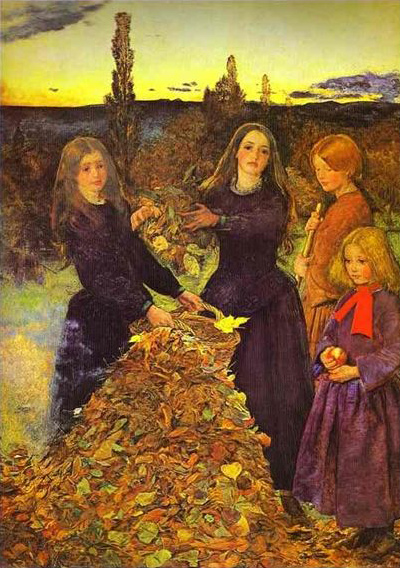Autumn Leaves is beautiful painting by the well known artist, John Everett Millais. It is a warm and inviting twilight scene depicting four beautiful young girls who are gathering and raking in golden brown leaves that have fallen amid a huge garden.
A replica of this wonderful piece would look good look in a living room, dining room or hall way.
This painting is regarded as being representative of the ever present transience of the cycles of beauty and youth. Interestingly, the youngest of the four girls is holding an apple, and this may represent the loss of a child's innocence, as related to the Bible's Garden of Eden scenario.
This transience is a common element in Millais' other paintings, and this particular piece could have been influenced by the great poet, Alfred Lord Tennyson, as Millias had once assisted him in raking in the leaves on autumn day while visiting Tennyson's house in the country.
In the scene, the girls are having a bonfire, although just a small amount of smoke is shown coming up between the leaves. There is a very interesting contrast between the two girls on either side of the painting.
On the left hand side, the two girls are painted in likeness to Sophy and Alice Gray, who were the artist's sisters-in-laws. They are clearly distinguishable as middle-class due to their elegant clothing and stylish hair. Conversely, on the painting's right hand side, the two girls are dressed in working-class rough outfits, and their hair is less refined. Historically speaking, this piece is quite important as it is regarded as one of the initial influences in the aesthetic movement.
When Millais received a positive review of his Autumn Leaves by the renowned artist, Frederic George Stephens, he told the former that he wanted the painting to open up spiritual reflection through its solemness, and that he decided to paint the burning leaves in order to empower this feeling.




